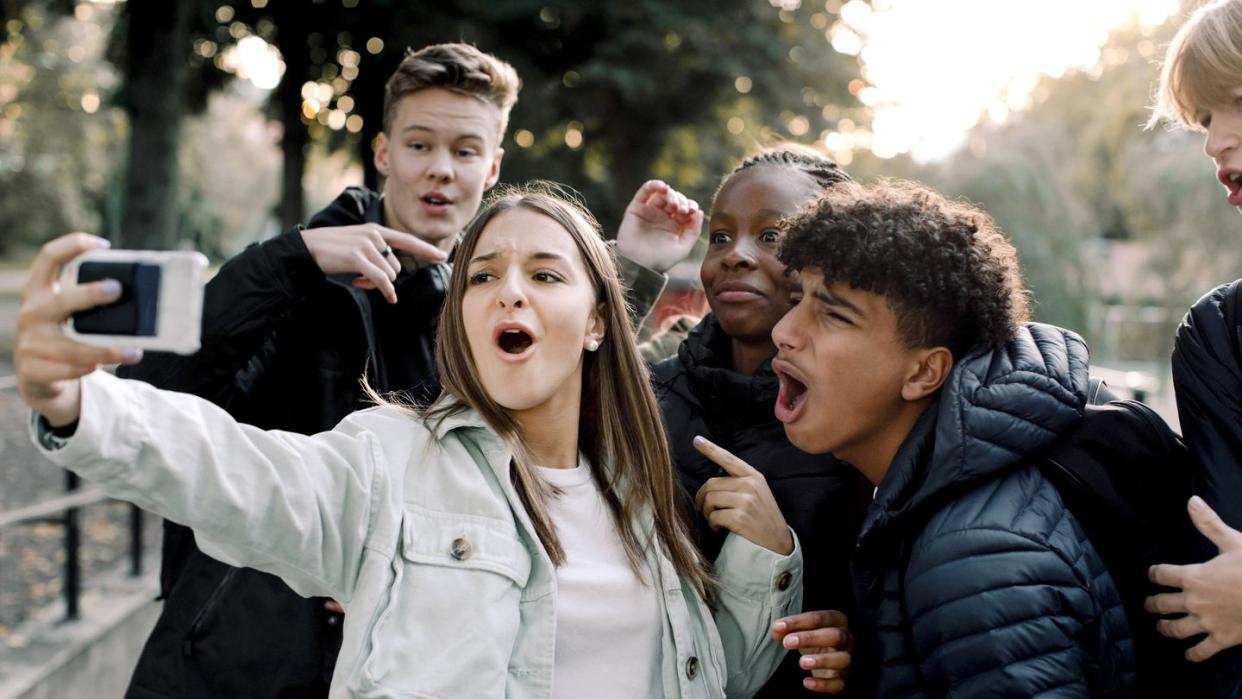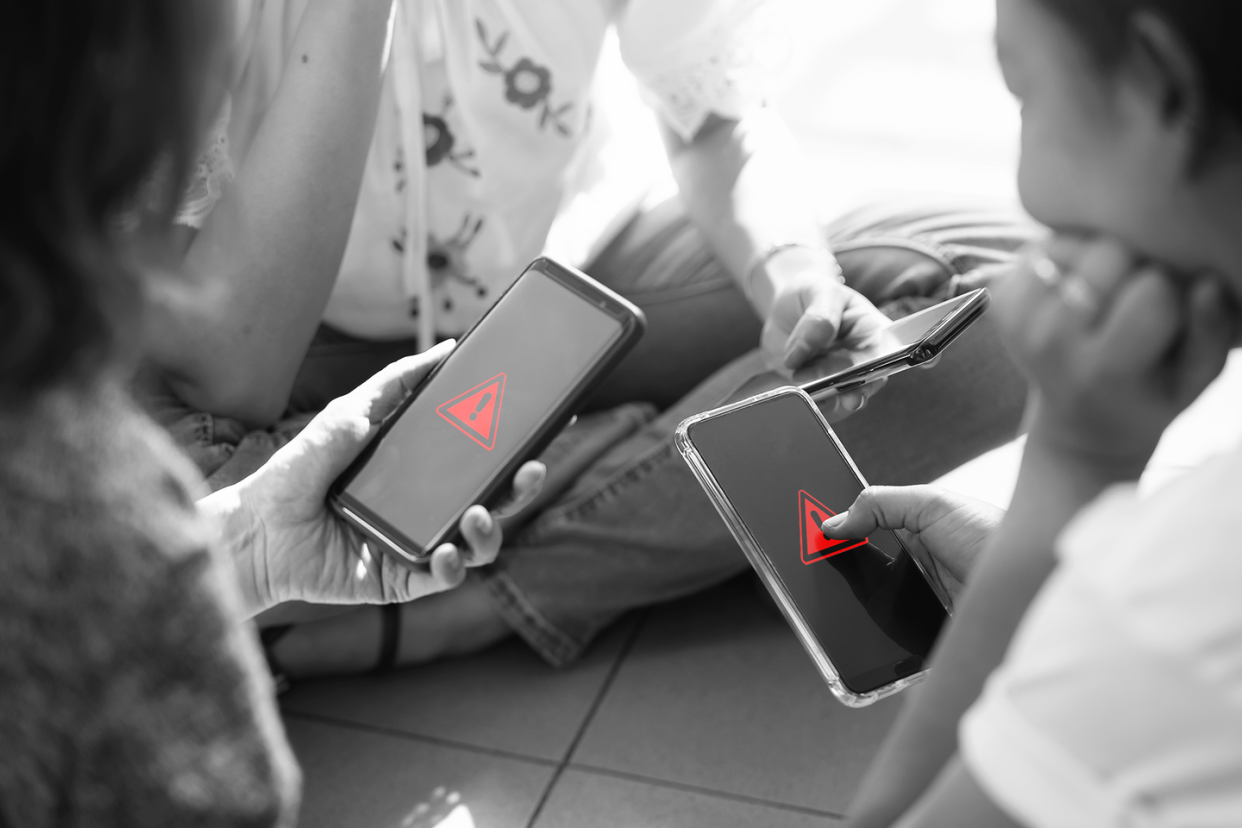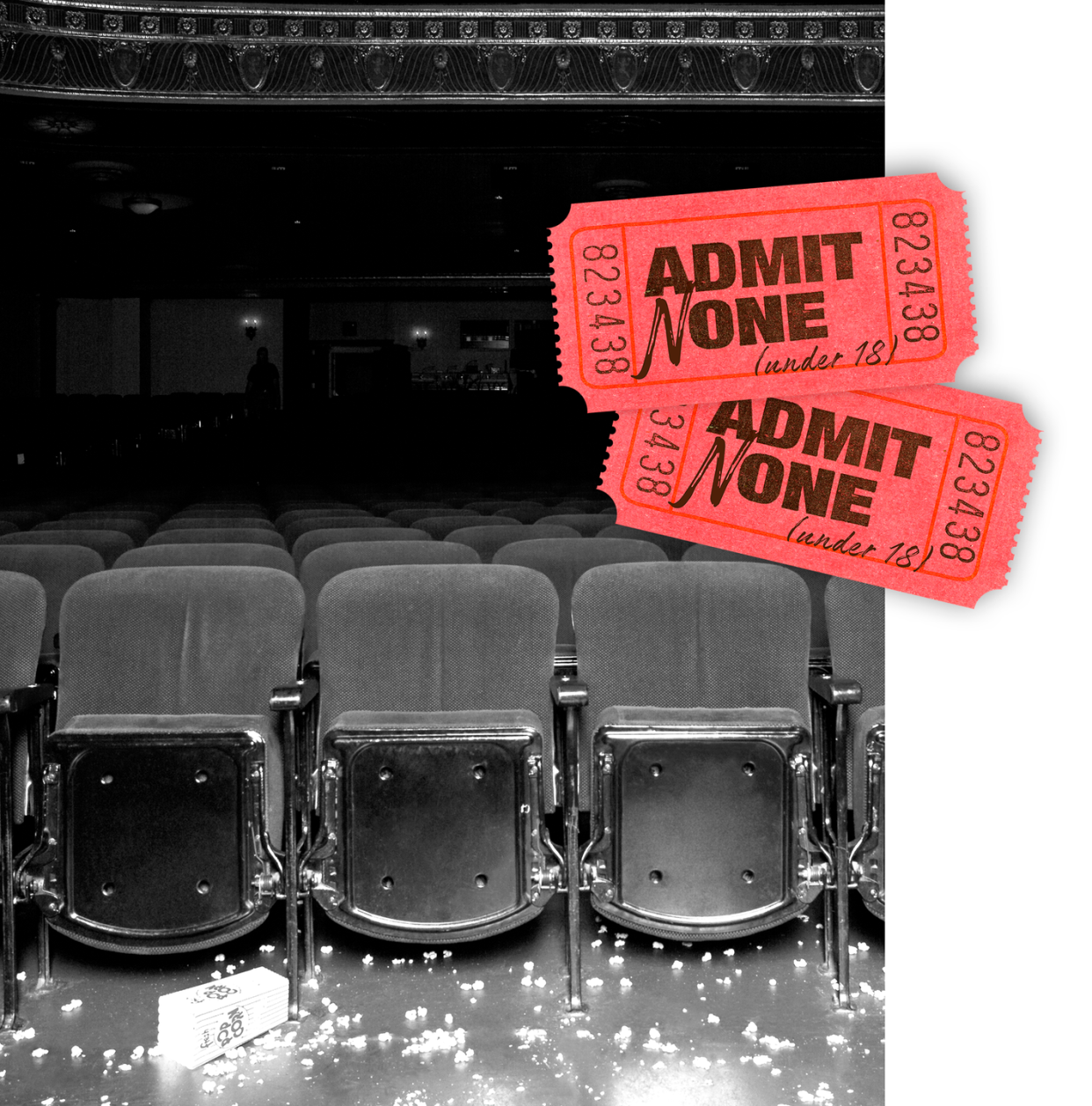Should Teenagers Be Banned From Malls and Movie Theaters?

"Hearst Magazines and Yahoo may earn commission or revenue on some items through these links."
Dawna Jarvis’ 15-year-old son Chace isn’t a bad kid, much less a criminal. Yet he and his friends, who are hockey players, have had the police called on them twice. The first time, they had walked to a store to buy coffee from a restaurant after leaving the rink. “While goofing around and playfully stealing a flip-flop from one another, a passerby misconstrued their actions as a fight and called the police,” says Jarvis, of Simi Valley, CA. Fortunately, the officer realized there was no fight and let them go on their way.
Another time, Chace and a friend hid in a tree while playing hide-and-seek. Someone called the police, thinking they were hiding from an attacker. Again, officers quickly cleared up the misunderstanding. However, “These incidents highlight a tendency for adults to misjudge typical teen behavior as something more sinister,” says Jarvis. “It's challenging for teens like my son to find public spaces where they can just be themselves without facing undue scrutiny or complaints,” she says.
Unfortunately, the suspicions many people have about teens didn’t just pop up out of nowhere. In many cases, the concerns are due to very real incidents of teens being rowdy, disruptive or violent. For instance, in May, about 200 teens were at a carnival at Northtown Mall in Blaine, Minnesota. A group of girls got into a fight. When police officers tried to break it up, teens punched officers, one jumped on an officer’s back and one girl elbowed an officer in the head. The carnival and mall were shut down, two teens were arrested and charged with assault, and an officer was later diagnosed with a concussion.
In another situation, last year, more than a dozen teens trashed a Chinese restaurant in Queens, New York. They flipped tables and threw chairs, frightening staff and customers. The teens allegedly caused about $20,000 in damages.
Need we go on? You’ve heard some version of the saying, “A few bad apples spoil the whole bunch.” Well, that’s what’s going on with teens. Stories of bad actions from a few cause adults and businesses to give all teens the side-eye when they’re together in public places. That's understandable, but it also creates a conundrum because of the push to limit teens' smartphone and social media use and encourage more in-person interactions. “Data shows us that the amount of time that young people are spending on social media, video games and other tech activities is very much linked to negative outcomes,” says Delaney Ruston, M.D., a physician, filmmaker of the Screenagers documentaries and author of Parenting in the Screen Age. Time online takes away from the time teens need for normal development, such as sleep, physical activity and real-life relationships, and it exposes teens to social cruelty and constant comparisons, which can damage their self-esteem and mental health, she explains.

Teens face mixed messages.
Larissa May, founder of #HalfTheStory, an education nonprofit focused on adolescent digital well-being, says most teens actually don’t want to spend every waking moment online. “Teens want to experience play, creativity and real human connection, which is at the core of our basic needs,” she says.
But some teens find it difficult to find places for those in-person interactions to occur. Some malls, movie theaters and amusement parks around the country have restrictions on when teens can visit without parents or adult chaperones. For instance, after multiple teen brawls, Knott’s Berry Farm, a theme park in Southern California, now requires an adult (age 21 or older) to be with anyone 15 or younger after 4 p.m; its Soak City Waterpark has a similar policy.
Westfield Garden State Plaza, a mall in New Jersey, has a rule that people under 18 must have an adult chaperone after 5 p.m. on Fridays and Saturdays. It implemented the policy due to “an increase in disruptive behavior that violates the center’s code of conduct by a small minority of younger visitors.” The Mall of America, the nation's largest shopping mall, in Bloomington, Minnesota, was one of the first shopping centers to put a chaperone policy in place in 1996. The rule then was no minors under age 16 were allowed without an adult on Fridays and Saturdays after 6 p.m. It now has a Parental Escort Policy, which states that anyone under age 16 must have a chaperone who is 21 or older after 3 p.m. daily. It’s unclear if the updated policy is due to problematic behavior or if it’s a preventative measure.

Some movie theaters have age restrictions, too. And not just to see NC-17 or Rated R movies — to see any movie, period. Alamo Drafthouse Cinema, a national chain, has a rule that all people under age 18 must be with a parent or adult guardian “to preserve the experience for all guests.”
Even some restaurants have set limits. Last year, a Chick-fil-A franchise in Royersford, PA announced a new policy on its social media page: Anyone under age 16 must be accompanied by an adult to dine in. The restaurant explained it had many reasons it implemented the policy, including teens being loud, using explicit language, throwing food and trash, vandalism, theft of decorations, disrespect towards employees and unsafe behaviors in the parking lot and drive-thru lanes.
And yet aren’t malls, movie theaters, and fast-food restaurants core to the teenage experience? Gathering at parks, playgrounds or outside a friend’s home isn’t always an option either. If you have your neighborhood’s app, you’ve likely seen the many shrill posts about “suspicious-looking teens” hanging around.
“Teenagers feel caught between a rock and a hard place,” says John Duffy, Psy.D., a clinical psychologist and author of Parenting the New Teen in the Age of Anxiety. “They’re told to stop looking at screens and get outside, but they go to a park or other public area and are told to leave.”
The reasons for restrictions are valid sometimes, but not always.
Businesses say they're forced to put restrictions in place because of the disruptive (and sometimes dangerous) behavior of some teens. They also have to be considerate of their other customers or guests. Believe me, we get it. When your family goes out for dinner at a restaurant or to a movie, it can be annoying and uncomfortable when a group of teens is being loud, rowdy and obnoxious. It’s even worse if a fight breaks out and potentially puts your family in the line of danger.
But some teens (and adults) argue it’s unfair to judge all teens harshly because of the actions of a few. Ahmed, 17, of Massachusetts, says he or his friends have been asked to leave places before. He admits that sometimes it was because of misbehavior from someone in the group. However, he feels other times were strictly due to their ages. “Sometimes, there’s a stigma that all teens are there to create trouble, which is generally not true,” he says. “Spaces need to be more aware of teens just trying to hang out, rather than assuming the worst.”

Jennifer Silver, a dentist in Calgary, Alberta, Canada and mom of two teens, ages 14 and 17, agrees the suspicion is sometimes unwarranted. Once, when her daughter and friends were at a park, a group of adults stared and made remarks about them. “While they didn't directly confront the teens, their presence alone created a sense of unease and made the group feel unwelcome in that space,” says Dr. Silver. Something similar happened to her son at a mall.
Ally, who recently turned 18, of Washington, believes there’s a specific reason some people shun teens: “I think that because of the way the media portrays teenagers, specifically Gen Z, this makes the older generations and public places wary of when big groups of teens hang out,” she says. “I don’t think today’s teens are all that different from teens in the 90s; it’s social media that paints us in a negative light, unfortunately.”

For the most part, teens simply want freedom to be teens.
The unruly behavior and pushing boundaries are normal. “Think back to your own teen years, and not the romanticized version of how wonderful you were,” says Michael J. Bradley, Ed.D., an adolescent psychologist and author of Crazy-Stressed: Saving Today's Overwhelmed Teens with Love, Laughter, and the Science of Resilience. “Teenagers can be loud and rowdy and a pain in the butt, and weren’t we all that way at some point? ” he says.
However, he also acknowledges there’s a big difference between teens turning up the volume too much or letting an F-bomb slip out and engaging in criminal activities. Obviously, the latter is a no-go. But if it’s just the typical teen behavior, like them being loud or acting silly while with friends, which we all likely did during adolescence, it may be helpful to lighten up on them a little. “Teenagers already feel bad about themselves due to the developmental stage they're in, and when they’re in the presence of adults, they’re automatically waiting to be negatively judged or criticized,” says Dr. Bradley.
That’s not to say whatever goes wherever. “Parents should talk to their teens about possible reasons businesses have bans [and restrictions],” says Kim Wheeler Poitevien, LCSW, who specializes in child and adolescent therapy in Flourtown, PA. She recommends, rather than lecturing, asking questions like, “What do you think of the mall’s new curfew?” and “Why would they do that?” This can start a conversation about how adults treat teens and appropriate behavior in public settings, Wheeler Poitevien says.

Teens need access to public spaces without adults hanging over their shoulders all the time.
It’s important for a lot of developmental growth. When teens visit places without adults, they learn social skills they'll need later in life, such as how to communicate with adults and navigate conversations and situations with people they don't know, says Dr. Duffy. They will also feel more connected with their communities.
When teens don't have many public places they can go, they usually go to someone's home as a default. “In the home, even when they’re with friends, teens tend [to gravitate] toward screens, either for watching, scrolling or playing video games,” says Dr. Duffy.
Therefore, if we truly want teens to reduce screen time, adults and businesses must be more welcoming. Yes, we know that can be difficult to do, especially when the teens are being annoying or a business isn’t fond of their actions. But remember, teens are learning independence, social skills and how to interact respectfully, just as we did when we were younger.
We got it together, didn’t we? So let’s give them a chance. As long as the teens’ behavior isn’t dangerous or illegal, and doesn’t harm the business, having patience and working with them can go a long way. When teens feel valued, respected and welcomed, they’re more likely to have more positive interactions with adults and businesses in the present and future.
Stuck on places teens can go?
Brainstorm with your teen about teen-friendly local spots and activities. Some may include:
bowling alleys
community centers
parks
arcade rooms
paintball
after-school clubs for teens
escape rooms
"teen night” at businesses like skating rinks or trampoline parks
some restaurants, malls and movie theaters (check their age policy)
Also, if your teen and their friends hang out at your home, make it appealing for offline activities. Think a ping pong or air hockey table, cards, board games, a karaoke machine, or sporting equipment.

You Might Also Like
